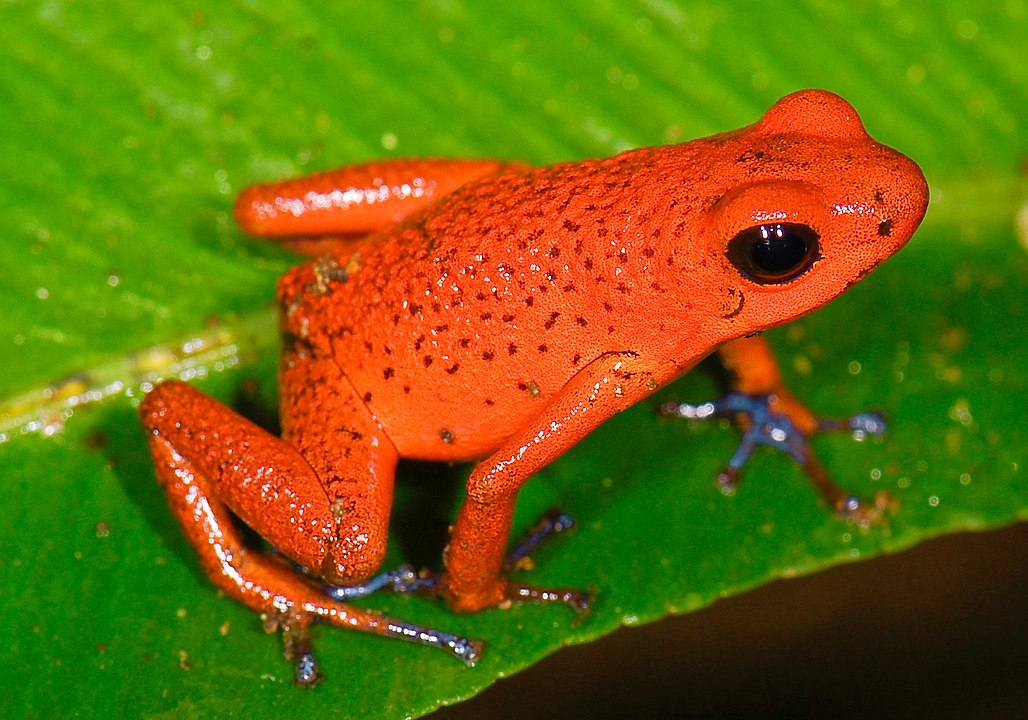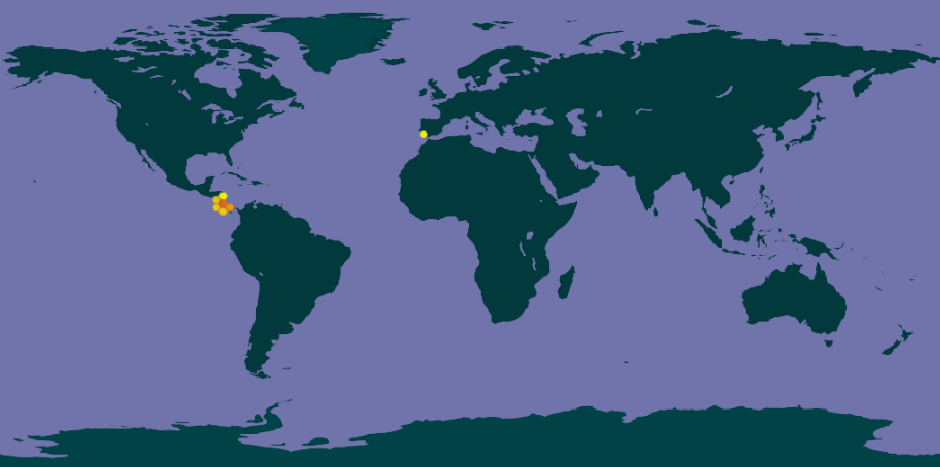Oophaga pumilio (Schmidt, 1857)
Strawberry poison-dart frog

| Kingdom | Animalia |
| Phylum | Chordata |
| Class | Amphibia |
| Order | Anura |
| Family | Dendrobatidae |
| Genus | Oophaga |
| Species | Oophaga pumilio (Schmidt, 1857) |
Listen to the SONIFIED SPECIES

Known records of this species

Taxon Description
The strawberry poison frog, strawberry poison-dart frog or blue jeans poison frog (Oophaga pumilio, formerly Dendrobates pumilio) is a species of small poison dart frog found in Central America. It is common throughout its range, which extends from eastern central Nicaragua through Costa Rica and northwestern Panamá. The species is often found in humid lowlands and premontane forest, but large populations are also found in disturbed areas such as plantations. The strawberry poison frog is perhaps most famous for its widespread variation in coloration, comprising approximately 15–30 color morphs, most of which are presumed to be true-breeding. O. pumilio, while not the most poisonous of the dendrobatids, is the most toxic member of its genus.
Taxonomy
Oophaga pumilio belongs to the genus Oophaga, although the name Dendrobates pumilio is still sometimes used. There is evidence that the species of Oophaga (previously classified as the “female parental care group” of Dendrobates) are a monophyletic evolutionary group. Due to the low level of genetic divergence between the species analyzed in this genus, it is estimated that they speciated relatively recently, after the formation of the current Panamanian land bridge in the Pliocene (3–5 million years ago). Oophaga pumilio is believed to be most closely related to Oophaga arborea and Oophaga sylvatica.
Reproduction and parental care
Oophaga pumilio is an external breeder, and other species of the genus Oophaga are notable in the amphibian world for exhibiting a high degree of parental care. The strawberry poison frog has dual parental care. The males defend and water the nests, and the females feed the oophagous tadpoles their unfertilized eggs. Although both male and female contribute to parental care, females invest more heavily in terms of energy expenditure, time investment, and loss of potential reproduction. When choosing a partner for mating, females will choose the closest calling male rather than the highest quality male. Females provide energetically costly eggs to the tadpoles for 6–8 weeks (until metamorphosis), remain sexually inactive during tadpole rearing, and care for only one clutch of four to six tadpoles at a time. The males contribute via the relatively “cheap” (in terms of energy) act of watering and protecting the eggs for a relatively short period (10–12 days), and can care for multiple nests at one time. The extreme maternal investment in their offspring is believed to be the result of high egg mortality. Only 5–12% of the clutch develops into tadpoles, so the female’s fitness may be best increased by making sure those few eggs that form tadpoles survive.